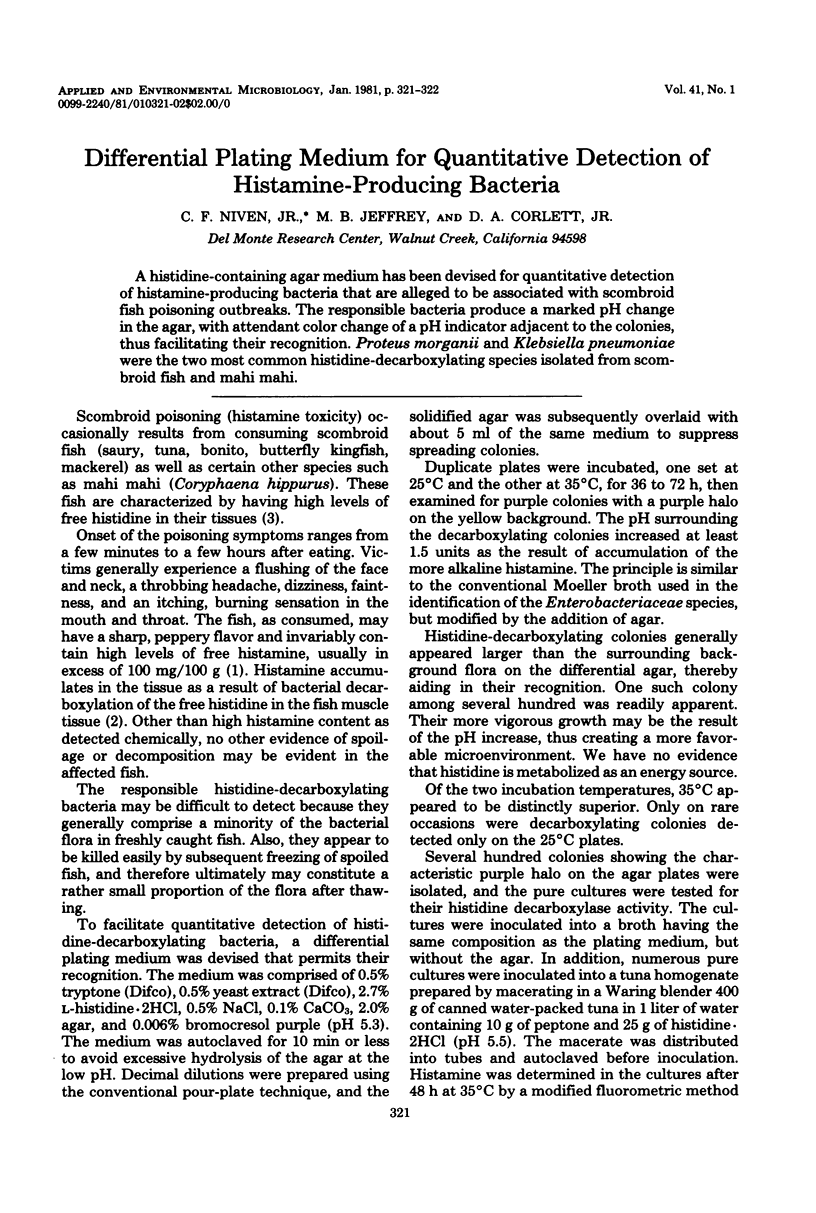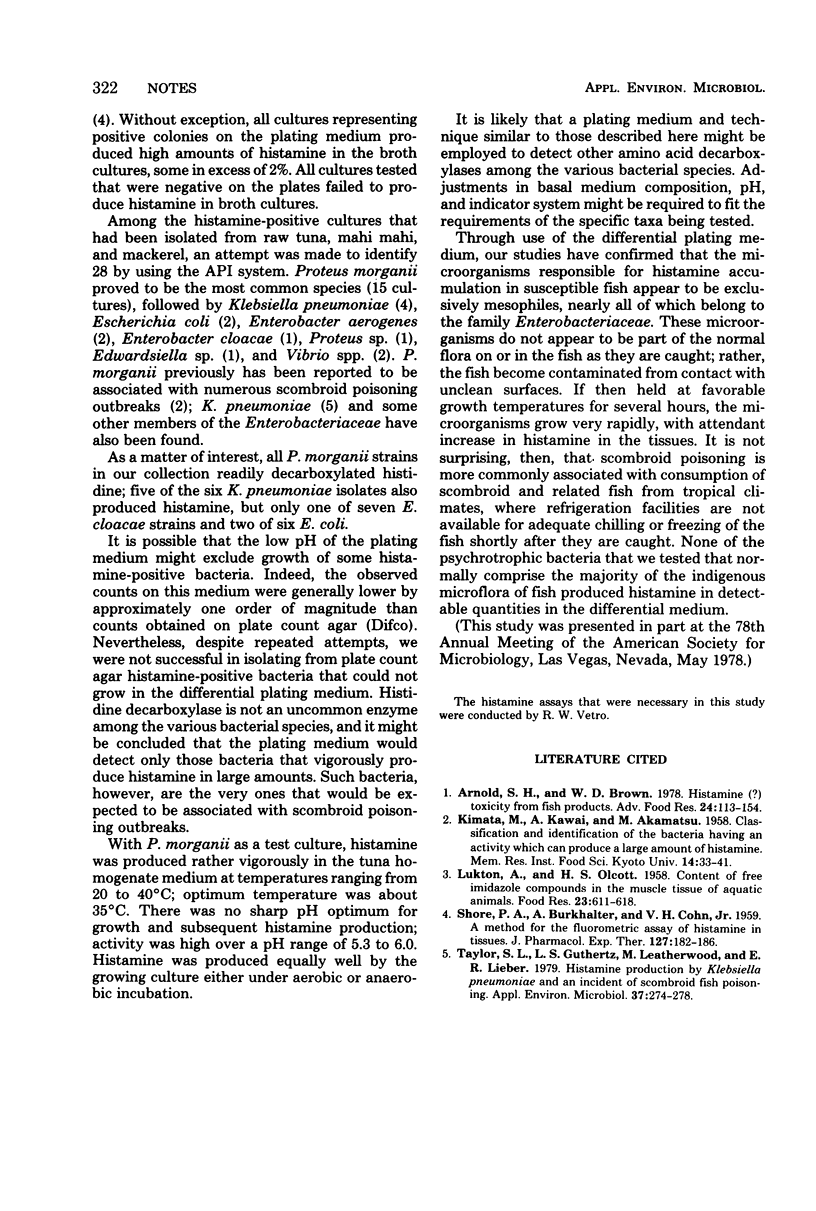Abstract
A histidine-containing agar medium has been devised for quantitative detection of histamine-producing bacteria that are alleged to be associated with scombroid fish poisoning outbreaks. The responsible bacteria produce a marked pH change in the agar, with attendant color change of pH indicator adjacent to the colonies, thus facilitating their recognition. Proteus morganii and Klebsiella pneumoniae were the two most common histidine-decarboxylating species isolated from scombroid fish and mahi mahi.
Full text
PDF

Selected References
These references are in PubMed. This may not be the complete list of references from this article.
- Arnold S. H., Brown W. D. Histamine (?) toxicity from fish products. Adv Food Res. 1978;24:113–154. doi: 10.1016/s0065-2628(08)60157-3. [DOI] [PubMed] [Google Scholar]
- SHORE P. A., BURKHALTER A., COHN V. H., Jr A method for the fluorometric assay of histamine in tissues. J Pharmacol Exp Ther. 1959 Nov;127:182–186. [PubMed] [Google Scholar]
- Taylor S. L., Guthertz L. S., Leatherwood M., Lieber E. R. Histamine production by Klebsiella pneumoniae and an incident of scombroid fish poisoning. Appl Environ Microbiol. 1979 Feb;37(2):274–278. doi: 10.1128/aem.37.2.274-278.1979. [DOI] [PMC free article] [PubMed] [Google Scholar]


